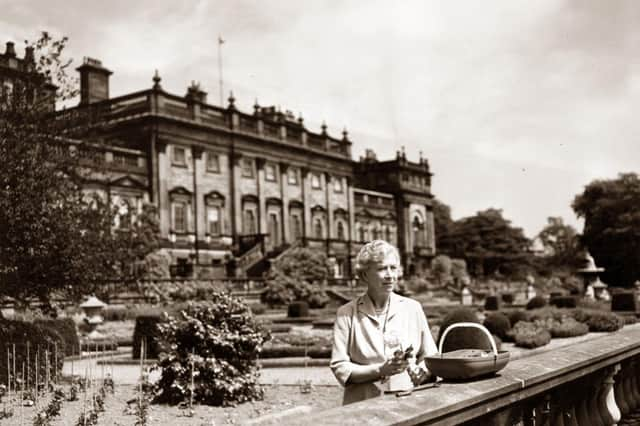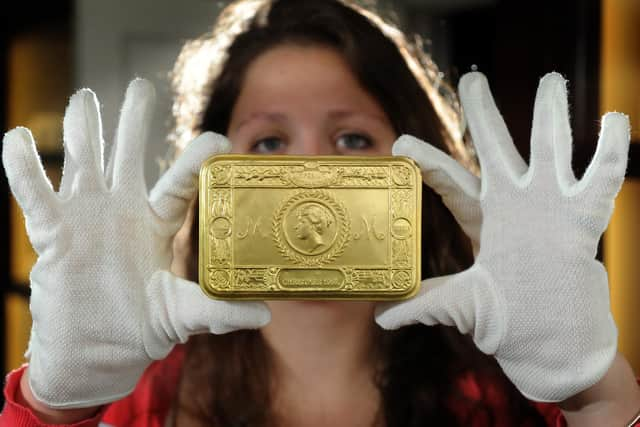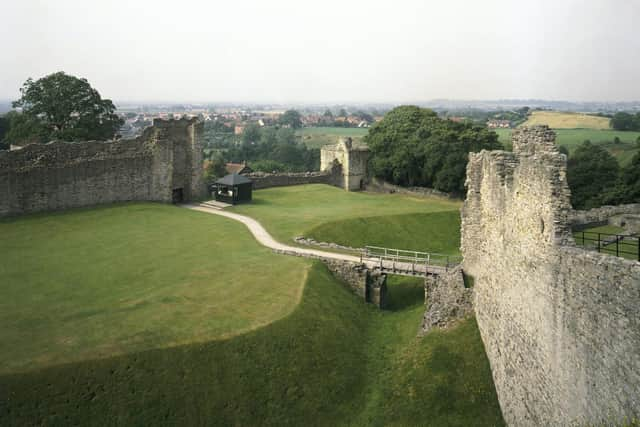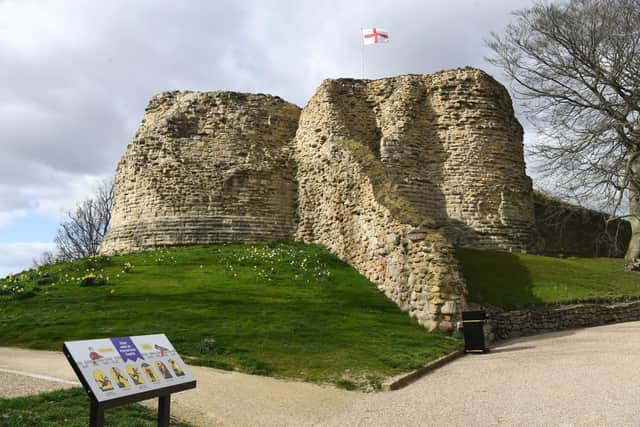Yorkshire's relationship with royalty stretches back hundreds of years - find out how


It was a year when the moon was eclipsed, and on a “mid-winter’s mass-night” in AD829, there was a momentous event in the little community of Dore. King Egbert of Wessex had marched his army north – no-one knows why this location was chosen – to meet his fellow monarch King Eanred of Northumbria. Eanred bowed his knee to Egbert, and, in doing that, the overlordship of all of Anglo-Saxon England became established. Egbert, in accepting “terms of obedience and subjection”, had become the first true King of a newly created nation.
This momentous event is now marked by a stone and a plaque, in the centre of the village green at Dore, now a suburb of Sheffield.
Advertisement
Hide AdAdvertisement
Hide AdMonarchs and their families have been coming back to Yorkshire ever since. To make peace, to wage war, to build castles, to demand taxes, to celebrate, to make merry and to marry, to suffer ignominious defeat, and in at least one case, to die. There have been many “firsts” over the centuries.


One etched itself into the public consciousness in 1913. George V and Queen Mary were staying with the Earl Fitzwilliam at Wentworth Woodhouse, when news reached the palatial home that there had been two explosions at the nearby Cadeby Pit, and that many men had been killed, while others were still trapped underground.
For the first time in modern history, the King and his consort knew they had to be with their people at a time of tragedy, and motored over to give their support to the families of the 91 workers who had died. It was a spontaneous outreach of goodwill, and, apparently, much appreciated.
Other monarchs have not been so warmly welcomed – Charles I is said to have been incandescent with rage when the citizens of Kingston-upon- Hull refused him entry to the city in 1642. He and his army of men had demanded access to the large arsenal stored behind the walls. In high dudgeon, Charles and his men retreated to York. Then he received information that Hull’s parliamentary governor, Sir John Hotham, might be willing to surrender if he was allowed to do so with “his honour intact”. Charles marched back again, but in the meantime, reinforcements and supplies had reached Hotham, and Charles was rebuffed for a second time. Once again, he and his men decided that York was a far better option. Charles’ affection for this part of Yorkshire must have been at rock bottom.
Advertisement
Hide AdAdvertisement
Hide AdYorkshire became “the stronghold of the North” in the immediate aftermath of the Norman invasion of 1066. Strongly fortified castles sprang up across the county, from Conisbrough and Tickhill in the south, to Middleham, Richmond and Pickering in the north, Scarborough in the east, and Skipton in the west. Many are now in the care of English Heritage, but the thing that unites them all is the way that they were strategically sited, and that most of them still command breathtaking views across our countryside.


One of the saddest is Pontefract, where building work began in 1070, on a rocky outpost granted to Ilbert de Lacy, a favourite of William the Conqueror. In the closing years of the 14th century, the castle belonged to Henry Bolingbroke, son of the national hero John of Gaunt, but then Richard II seized all the Bolingbroke lands, and shared the properties between his favourites. Bolingbroke returned from exile (landing at Ravenspur, on the Humber) and not only grabbed back his property but deposed Richard and crowned himself Henry IV. The unhappy Richard was first housed in the Tower of London, but afterwards shifted to Pontefract (via Knaresborough Castle) as a sort of “out of sight, out of mind” manoeuvre. Humiliated by his guards, and most probably starved to death, he died on February 14, 1400. Only a few decades later, Richard III had two adversaries (Sir Richard Grey and the second Earl Rivers) beheaded at Pontefract. Even Mary, Queen of Scots, was lodged at Pontefract, while travelling between Wetherby and Rotherham.
Richard III is inextricably tied into the region’s history, a true “adopted Yorkshireman” if ever there was one – although he had the misfortune to have been born in Northamptonshire. He spent much of his youth in Wensleydale, growing up in Middleham Castle under the watchful eye of his cousin, Richard Neville, the Earl of Warwick, who was nicknamed “the Kingmaker”. While at Middleham, he also met Neville’s daughter, Anne, whom Richard was later to marry. Was she, by any chance, the unlucky lady who later mislaid the Middleham Jewel, now one of the most-loved exhibits at the Yorkshire Museum in York?
Richard loved his time in the North, and his only legitimate son, Edward, was born at Middleham, and spent much of his short life there. Richard doted on the child, and made him Prince of Wales and Earl of Chester in a magnificent ceremony at York Minster on September 8, 1483. Tragically, Edward never enjoyed robust good health, and he died, in the spring of the following year – at Middleham. The place of his burial isn’t known, but it was long thought that a tomb in the beautiful Grade I-listed church of St Helen and the Holy Cross in Sheriff Hutton was his. It is made of alabaster, and clearly shows a young man, but now it is thought that it might be another child connected to the Neville family.
Advertisement
Hide AdAdvertisement
Hide AdRichard III did have at least one other son, an illegitimate boy called John, who was born in Pontefract, and who was knighted in York Minster on the very same day that his brother was created Prince of Wales.


A later Prince of Wales – who became George IV – frequently visited the county, to try his luck at the races. He particularly enjoyed staying in Doncaster, as did his great-nephew, who was to become Edward VII. Their visits always meant that the great houses of the neighbourhood were filled with their families, friends and retinues.
But it was the granddaughter of Edward VII who was to make the biggest impact on Yorkshire – in fact, she was fondly nicknamed the “Queen of the North and the “Yorkshire Princess”, and her biographer, Barnsley-based writer and historian Elisabeth Basford, has called her “Britain’s first modern princess”. Outside the county, she remains (relatively) unknown, but Princess Mary was the only daughter of King George V. What brought Mary to Yorkshire? She had married Viscount Lascelles, the heir to Harewood House (she was grandmother to the present Earl), and had moved to “the big house” from Goldsborough Hall on the death of her father-in-law. She was the first royal princess to stop, on the way from her marriage, to lay her wedding bouquet in homage to the fallen of the First World War. Others – like Princess Diana and the Duchess of Cambridge – followed her lead. And thousands of homes across the UK will still have a memento of Mary – she wanted to bring a little comfort to the troops and naval forces, so in 1914 they received Princess Mary’s Gift Box, a gold-coloured embossed tin, which contained baccy, some chocolate and a small picture of her.
“She had great grit, great determination, and was a champion of women’s causes,” says Basford. “She was the first ever female chancellor of a British university when she was appointed at Leeds. She trained as a nurse, she had given blood publicly during WWII to help the Transfusion Service. But for her, these were not gestures, because she truly was ‘hands-on’. When she died, in 1965 – while on a walk at Harewood – Yorkshire mourned her deeply.”
Basford sent a copy of her book to the Queen as a gift. “I had a wonderful letter back which Her Majesty said was revelatory – ‘I never knew that my aunt did so much for so many.’”